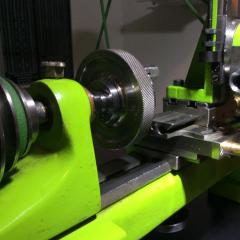-
Recently Browsing
- No registered users viewing this page.
-
Topics
-
Posts
-
By watchfellow · Posted
Thanks everyone for the replies. It seems setting the hand is a bit of a guessing game, and I thought there would be a very specific way to do it. Since the reserve indicator hand moves clockwise as the spring is wound, I tried setting it right at the start of the black side. But setting it there doesn't really make sense, because by the time the spring is halfway wound, the hand is only at the end of the red side... In my head halfway wound shouldn't mean the hand is still "in the red." -
Lovely part of the country! I spend most of my days driving along the A64 for work in and around York. I'll be sure to drop plenty of questions soon! I've actually got a couple of watches on the way that I'm pretty sure I'll need some help with! They look pretty beat up from the pics but I love a challenge and an excuse to buy more tools 🤣
-
I have two of these in my home. You need to remove the movement from the case, take off the hands and remove the dial and take a few good photos of the front plate so I can see what the problem is. The round nut unscrews and the hands pull off pull them off from the center and not the tips as you could break them.
-
By Neverenoughwatches · Posted
I asked the question of one of the sellers. Its for removing the pins and making the holes in motorbike drive belts. God knows why they were both in two seperate joblots of watchmaking tool, thats bizarre. I haven't posted your setting lever steel yet mike, been busy with my mum past few days and had a locked myself in at home lazy watch repair day today 🙂 but I'm out tomorrow so i will get it off to you then. -
Hi everyone, I tried looking for answers on this online but came up with nothing, so I'm hoping some of you knowledgeable people might be able to help. I have an Elliot clock that has been in my family for at least 4 generations. I recently enherited it, and I'm trying to get it to run properly again, as it's been neglected a bit. Here,s the problem. These clocks have a silencer mechanism, which is supposed to stop it from chiming between 11PM and 7AM but for some reason mine is silent between 1AM and 9AM. I have tried figuring out how to adjust it but have not managed. Does anyone have any idea on how to correct this? Please find attached some pictures of the clock. Thank you!
-








Recommended Posts
Join the conversation
You can post now and register later. If you have an account, sign in now to post with your account.
Note: Your post will require moderator approval before it will be visible.